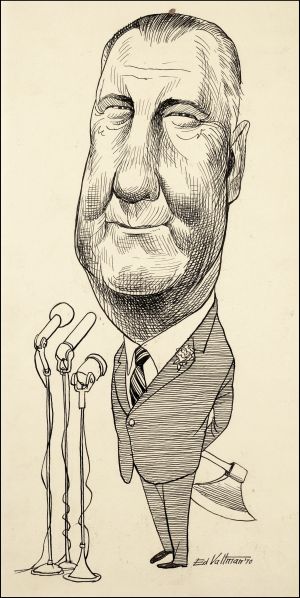Authors:
Historic Era: Era 10: Contemporary United States (1968 to the present)
Historic Theme:
Subject:
June 2020 | Volume 65, Issue 3


Authors:
Historic Era: Era 10: Contemporary United States (1968 to the present)
Historic Theme:
Subject:
June 2020 | Volume 65, Issue 3

In the spring of 2016, the American Political Science Association polled forty scholars to name the worst vice president of the last century. Their consensus choice was an easy one: Spiro Agnew.
We disagree. Richard Nixon’s selection of Spiro Agnew to be his running mate in August 1968 proved to be one of the most underrated, consequential decisions in modern American politics, and it still reverberates a half century later. Although Agnew’s policy contributions during his five years in office were limited, he took on the important role of reshaping the trajectory of the Republican Party. His suburban, middle-class image, blended with his sharp-edged, anti-elite political style, launched his meteoric rise from an obscure county executive in a small border state to the man who was a heartbeat away from the presidency.
While there is no shortage of books about Richard Nixon, Bobby Kennedy, and the importance of the year 1968, scholarly work about Spiro Agnew is almost nonexistent. In our recent book, Republican Populist: Spiro Agnew and the Origins of Donald Trump’s America, we sought to give Agnew’s historical significance—for better or worse—its rightful place. We situate Agnew squarely, and prominently, in the lineage birthed by Barry Goldwater that is now ascendant in the GOP. It is a lineage that runs through Pat Buchanan’s presidential primary bids in 1992 and 1996, Sarah Palin’s brief star turn, the Tea Party, and most recently, Trumpism.
Since the 1960s the Republican Party has been based around a loose philosophy that has espoused support for smaller government, lower taxes, and a perceived toughness in foreign policy, particularly regarding the Soviet Union during the Cold War. The party found success at the national level in the past fifty years that had eluded it in the previous half century. And it has succeeded in achieving some of its primary policy purpose: the rollback of the New Deal/Great Society policy dominance that the Franklin Roosevelt/LBJ Democrats enjoyed from the 1930s through the 1960s.
Vice presidential scholars Christopher Devine and Kyle Kopko argue that the selection of the vice president often is justified on political, geographic, or policy grounds, but the electoral impact has been far from clear. The GOP establishment during these years nodded toward its populist wing by selective use of ticket balancing, best personified by vice presidential nominees like Bob Dole (1976), Dick Cheney (2000 and 2004), and Palin (2008). But in 2016 Trump was the firebrand at the top of the ticket. The more establishment figure (in this case Mike Pence) received the No. 2 spot to